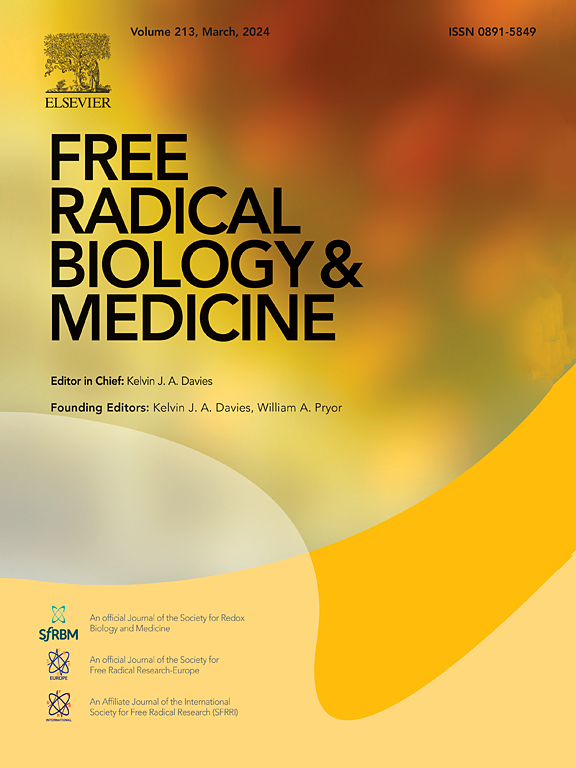Mitochondrial calcium uniporter regulates human fibroblast-like synoviocytes invasion via altering mitochondrial dynamics and dictates rheumatoid arthritis pathogenesis
IF 7.1
2区 生物学
Q1 BIOCHEMISTRY & MOLECULAR BIOLOGY
引用次数: 0
Abstract
Rheumatoid arthritis (RA) is a chronic, systemic autoimmune disease that currently has no cure. Fibroblast-like synoviocytes (FLS), present in the RA synovium, play a pivotal role in RA pathogenesis. Notably, FLS in the RA patients (RA-FLS) exhibit characteristics similar to cancer cells, like enhanced migration, invasiveness, uncontrolled proliferation, resistance to apoptosis, and metabolic reprogramming. RA-FLS invasiveness is linked to radiographic joint damage in the patients, whereas inhibiting the FLS migration mitigates disease pathology. However, the molecular mechanisms underlying the migration and invasion capabilities of RA-FLS are not entirely understood. In this work, we have explored the function of mitochondrial calcium uniporter (MCU) and calcium signaling in FLS invasion. Our findings demonstrate a positive correlation between MCU expression and RA disease score. Interestingly, mitochondrial size was reduced, and peripheral localization was more pronounced in the RA-FLS when compared to the control FLS. Mitochondrial calcium import inhibition in the FLS by specific MCU inhibitor, Ruthenium-360 restored these altered mitochondrial dynamics and reduced the invasive phenotype. Through unbiased transcriptome analysis, we identified that MCU-mediated calcium signaling in RA-FLS leads to the enriched actin cytoskeleton and focal adhesion pathways responsible for the invasion phenotype, which can be effectively suppressed by inhibiting MCU. Additionally, we found that mitochondrial transport facilitator Miro1 binds to MCU in a calcium-dependent manner and regulates MCU-mediated mitochondrial dynamics and RA-FLS invasion. Experiments utilizing mice xenograft model demonstrated that MCU silencing diminishes the migration of RA-FLS toward the sites of inflammation in the immunocompromised SCID mice. Altogether, our findings highlight MCU as a promising therapeutic target to inhibit RA-FLS migration and RA progression.

线粒体钙单转运蛋白通过改变线粒体动力学调节人成纤维细胞样滑膜细胞的侵袭,并决定类风湿关节炎的发病机制。
类风湿性关节炎(RA)是一种慢性、全身性自身免疫性疾病,目前尚无治愈方法。纤维母细胞样滑膜细胞(FLS)存在于RA滑膜中,在RA发病中起关键作用。值得注意的是,RA患者的FLS (RA-FLS)表现出与癌细胞相似的特征,如增强的迁移、侵袭性、不受控制的增殖、对凋亡的抵抗和代谢重编程。RA-FLS侵袭性与患者的放射关节损伤有关,而抑制FLS迁移可减轻疾病病理。然而,RA-FLS迁移和侵袭能力的分子机制尚不完全清楚。在这项工作中,我们探讨了线粒体钙单转运体(MCU)和钙信号在FLS侵袭中的作用。我们的研究结果表明MCU表达与RA疾病评分呈正相关。有趣的是,与对照FLS相比,RA-FLS的线粒体大小减小,外周定位更加明显。特异性MCU抑制剂钌-360对FLS线粒体钙进口的抑制恢复了这些改变的线粒体动力学并减少了侵袭性表型。通过无偏倚转录组分析,我们发现在RA-FLS中,MCU介导的钙信号通路导致肌动蛋白细胞骨架和局灶黏附通路的富集,这些通路与侵袭表型有关,可以通过抑制MCU有效地抑制。此外,我们发现线粒体运输促进剂Miro1以钙依赖的方式与MCU结合,并调节MCU介导的线粒体动力学和RA-FLS入侵。利用小鼠异种移植模型进行的实验表明,MCU沉默可以减少免疫功能低下的SCID小鼠中RA-FLS向炎症部位的迁移。总之,我们的研究结果突出了MCU作为抑制RA- fls迁移和RA进展的有希望的治疗靶点。
本文章由计算机程序翻译,如有差异,请以英文原文为准。
求助全文
约1分钟内获得全文
求助全文
来源期刊

Free Radical Biology and Medicine
医学-内分泌学与代谢
CiteScore
14.00
自引率
4.10%
发文量
850
审稿时长
22 days
期刊介绍:
Free Radical Biology and Medicine is a leading journal in the field of redox biology, which is the study of the role of reactive oxygen species (ROS) and other oxidizing agents in biological systems. The journal serves as a premier forum for publishing innovative and groundbreaking research that explores the redox biology of health and disease, covering a wide range of topics and disciplines. Free Radical Biology and Medicine also commissions Special Issues that highlight recent advances in both basic and clinical research, with a particular emphasis on the mechanisms underlying altered metabolism and redox signaling. These Special Issues aim to provide a focused platform for the latest research in the field, fostering collaboration and knowledge exchange among researchers and clinicians.
 求助内容:
求助内容: 应助结果提醒方式:
应助结果提醒方式:


